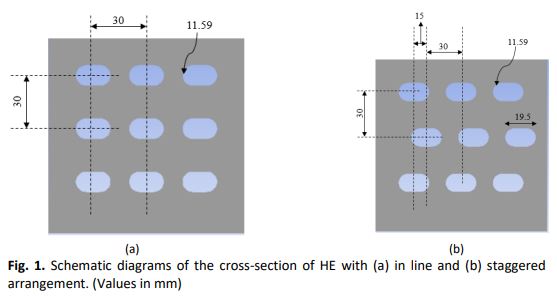Flow and Heat Transfer Simulation Analysis of 3D Compact Heat Exchanger
DOI:
https://doi.org/10.37934/arfmts.88.3.7187Keywords:
Numerical simulation, Compact heat exchangers, laminar flow, heat transfer, pressure dropAbstract
Compact heat exchangers (CHEs) are one of the most commonly used heat exchangers in the industry due to their superior advantages over other types of heat exchangers. Various geometric (fin spacing, tube inclination angle, etc) and process (such as flow velocity, temperature, etc) parameters affect the performance of such compact HEs. This research aims to examine the effects of fin spacing, tube inclination angle, and airflow velocity on heat transfer and pressure drop performance of CHE in both inline and staggered configurations. A three-dimensional (3D) numerical method with the aid of Ansys FLUENT software was carried out for the laminar flow condition. Based on the obtained results, the highest average heat transfer coefficient was observed at 120° for both tube arrangements while the lowest average pressure drop penalty is at 30°. Therefore, the recommended inclination angle when high heat transfer is needed is at 120° while if the pumping power is the major problem, 30 °or 150° is recommended. based on the London area goodness factor (j/f), 30° and 150° show the highest value for both configurations. The j/f factor decreases with the increase of Reynolds number for both configurations. In addition, 120° shows the lowest j/f which can be due to the high pressure drop.
Downloads

































